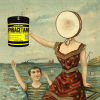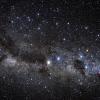I just read this study of medicinal mushrooms' effects on neurite outgrowth. I would be interested in what some others think:
http://www.ncbi.nlm....les/PMC3852280/
I, myself, have taken Paul Stamets' "Host Defense" brand of Lion's Mane (Hericium Erinaceus) mushroom extract in the past, in part informed by what I've read about Lion's Mane in longecity forums. The study I've cited above seems to suggest that Maitake (G. Frondosa) and Reishi (G. Lucidum) put Lion's Mane to shame in the neurite outgrowth department, which is the thing at which I believe Lion's Mane is claimed to excel (via stimulating NGF). Just take a look at some of the histological slides depicting the neurite growth (it's unfortunate that they don't have a slide of Lion's Mane for comparison).
Consider the following:
The positive control (NGF) recorded 26.4 ± 3.6% of neurite-bearing cells (Figure 2). The extraction yield of extracts from the mushrooms are summarised in Table 2. The percentage of neurite bearing cells after treatment with aqueous extracts of G. lucidum (38.4 ± 4.2%), L. rhinocerotis (38.1 ± 2.6%), and ethanol extract of C. militaris (35.8 ± 3.4%) were significantly higher (p < 0.01) than NGF control by approximately 1.45-, 1.44- and 1.35-fold, respectively. Aqueous extracts of G. frondosa (33.7 ± 1.5%) and P. giganteus (33.4 ± 4.6%) were also shown to induce significantly (p < 0.05) higher neurite bearing cells compared to the NGF control. Meanwhile, the aqueous extracts of L. rhinocerotismycelium, H. erinaceus, G. neo- japonicum, P. pulmonarius, as well as ethanol extracts of H. erinaceus,P. pulmonarius and P. giganteus showed varied neurite outgrowth stimulatory effects with average neurite bearing cells ranging from 26.4 ± 5.4% to 29.6 ± 2.2%. Further, these extracts showed no significant difference when compared to NGF control (p > 0.05). Among the plant extracts tested, wolfberry extract did not show any neurite outgrowth activity. The percentage of neurite bearing cells obtained after treatment with 20 μg/ml of ethanol extract of G. biloba (30.3 ± 2.5%) was better than curcumin which gave 26.4 ± 5.4% at 20 μg/ml. The five different mushroom extracts (G. lucidum, L. rhinocerotis, P. giganteus, G. frondosa and C. militaris) each at 20 μg/ml were selected for neurofilament staining.
Does this seem to indicate that Reishi and Maitake might be more useful in achieving some of the nootropic goals for which people have been suggesting the use of Lion's Mane? I'm aware that there are studies in which Lion's Mane has shown some capacity for encouraging other kinds of nervous system support (e.g. myelination: http://www.ncbi.nlm.nih.gov/pubmed/12675022) Anyway, I'd like to hear anybody's thoughts.


























































